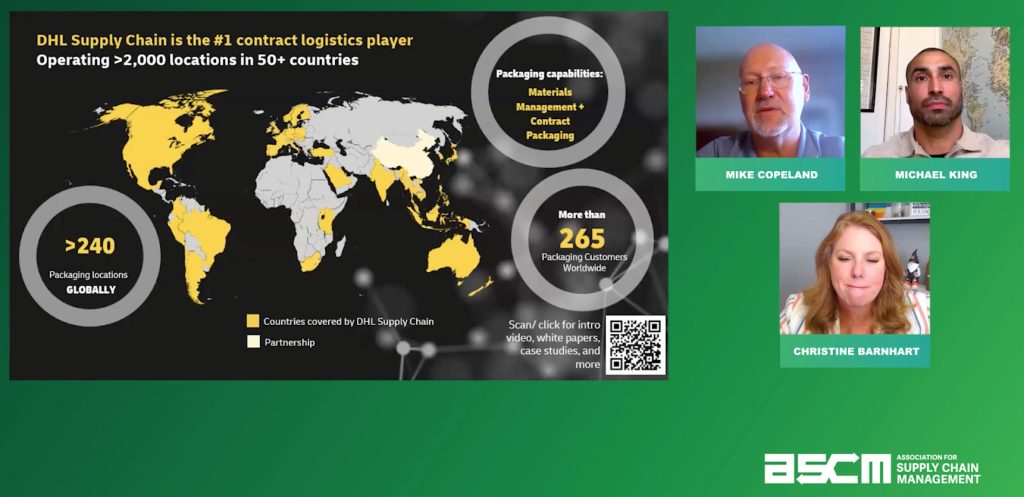The first four months of this year have been as economically tumultuous as any in recent history–no matter where in the world your company operates. The ongoing global tariff conflict, initiated by the new U.S. administration, has propagated an outsized level of uncertainty, instability, and unpredictability for untold businesses who operate on both sides of the border here in North America–not to mention the global market which has also suffered as a result of this instability. If this wasn’t a call for the importance of supply chain agility, I don’t know what is.
In a world where the threat of increased costs for both consumers and manufacturers shows no signs of abating, it is more critical than ever to work more closely with our partners, suppliers, and customers to bring new solutions to the table. This is especially true for brand manufacturers, whose networks of partners, as well as the ingredients and components used in the manufacture of their products, spans the breadth of the globe.
It is critical to leverage supplier collaboration as a strategy to address and mitigate the effects of tariffs, as proactive partnerships can minimize cost impacts and improve supply chain resilience.
Here are some effective strategies for leveraging supplier collaboration in the face of tariffs:
1. Encourage Transparent & Synchronized Communication
While some brands tend to keep their external partners at arms length, there are tangible benefits to bringing suppliers to the table to share information and planning.
- Share tariff impact data: Be upfront about how tariffs are affecting cost structures.
- Align on mutual goals: Whether it’s cost control, margin protection, or maintaining volumes, get on the same page.
- Joint forecast and order collaboration: Digitally synchronize and collaborate on volume forecasts, to ensure changes from forecasts, to orders to costs and inventory positions up and downstream from customer to suppliers are scalable so partners can plan production and sourcing accordingly. This is especially important to guard against any likely wild demand swings.
2. Agree on Cost-sharing Mechanisms
The pain of increased costs resulting from tariffs hurts every company, but the burden doesn’t need to be shouldered alone. Strong relationships between brands and their partners can allow for cost-sharing strategies that can ease the pain for every party.
- Negotiate shared burden: Split the increased cost in a way that reflects the value each party gets from the relationship.
- Tiered pricing models: For example, costs may increase only if tariffs exceed a certain threshold.
3. Brainstorm Alternative Sourcing
Cost pressures that threaten to reduce margins can stifle business flexibility, but can also drive creative solutions for sourcing new services, suppliers, or ingredients/components. This scenario is a prime example of leveraging suppliers’ specialized expertise for new solutions.
- Work together to identify new sources: Especially in tariff-free or lower-duty regions.
- Supplier-led sourcing suggestions: Encourage suppliers to present alternatives (subsidiary plants, third-party manufacturing and packaging, etc.).
4. Re-engineer Products and Components
The potential impact of tariffs is not to be understated. As a result, to mitigate the financial ramifications of these developments it may be necessary to revisit how your products are made and how your components are sourced.
- Material or bill-of-material component substitution: Ensure that ingredient and bill of material substitution is able to be communicated effectively and rapidly to ensure agility and also avoid tariffed materials or parts. This is another area where digital collaboration can be significantly advantageous to share and collaborate on bill of material/BOM updates and changes.
- Localization: Explore in-country production or assembly to minimize cross-border duties.
5. Review Tariff Classifications
The ongoing tariff conflict is another opportunity to evaluate where exactly your operations and products lie with regards to trade compliance.
- Audit harmonized codes: Collaborate to ensure accurate classification of goods. Sometimes reclassification can lower the duty.
- Use trade compliance experts: Jointly fund consultants or legal reviews if necessary.
6. Focus on Long-term Agreements with Built-in Flexibility
As we all know, tariffs won’t be the last major disruption to our markets. Building agreements with your strategic suppliers to ensure mutual long-term success can strengthen valuable relationships.
- Contracts with tariff clauses: These can outline how cost increases will be handled, promoting fairness and predictability.
- Volume commitments: Offer longer-term or higher-volume commitments in exchange for price protection.
7. Leverage Free Trade Agreements (FTAs)
It is equally critical to maximize the cost-effectiveness of the Free Trade Agreements under which your supply chain operates.
- Certificate of origin collaboration: Ensure suppliers can provide the documentation needed to benefit from FTAs.
- Strategic production shifts: Work together to move production to countries with favorable trade agreements.
8. Explore multi-enterprise collaboration platforms
Platforms that are purpose-built to enable real-time data sharing between trading partners can greatly streamline your mutual responsiveness to disruptions and align on planning motions.
- Collaborative manufacturing, which enables connected planning for synchronization of forecasts, plans, orders, BOMs and inventory, is proven to be a sustainable competitive advantage.
- Having multi-enterprise systems and processes in place enables companies to more rapidly standardize processes, data and collaboration with new suppliers and in new regions.
No Better Time to Shift From Me to We
The ongoing tariff conflict has consumed the global market and with good reason: its effects can drastically impact the way businesses operate and maintain their margins and competitiveness. As a result, it is critical for brands to reach out to their strategic suppliers and focus on collaboration for mutual success.
Conversely, companies that insist on operating solely transactional relationships with its supplier network, keeping valued partners at arms’ length, will doubly feel the pain of isolation, exposing your enterprise and operations to even more risk and loss.
As I always say, this black swan event will not be the last, and is yet another reminder that there’s no better time to put the processes, planning, and technology in place to problem solve together with your trading partners, suppliers, and customers.



